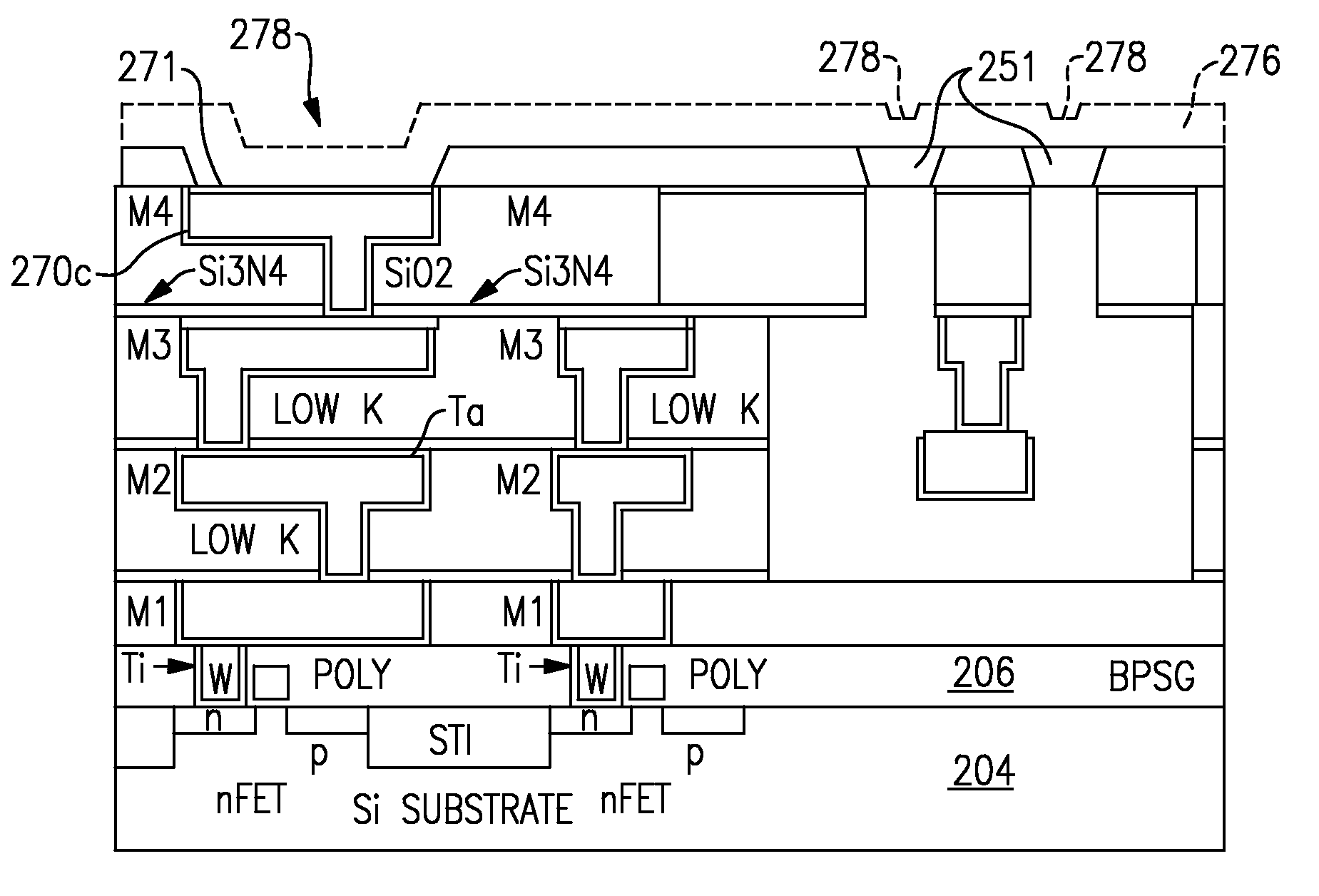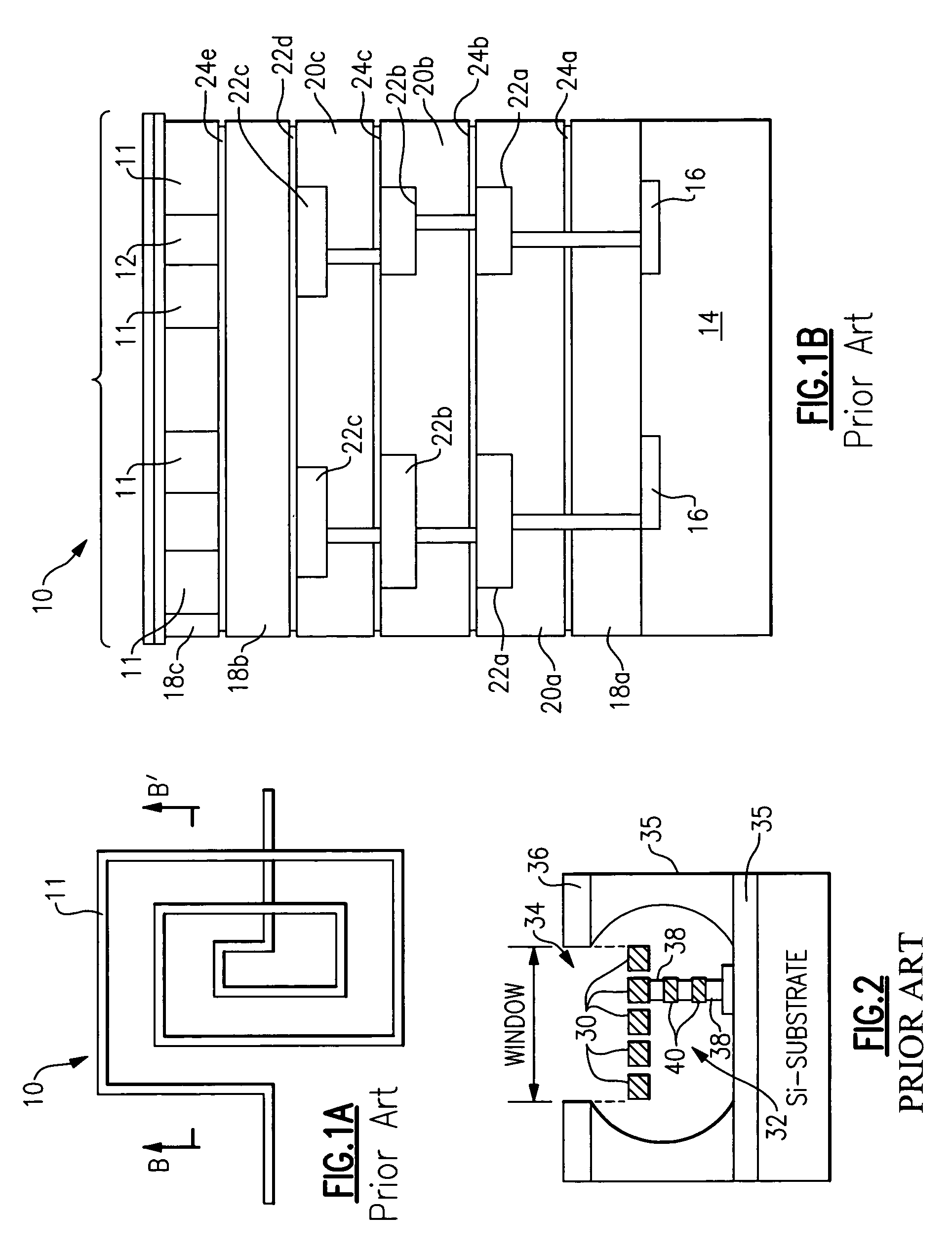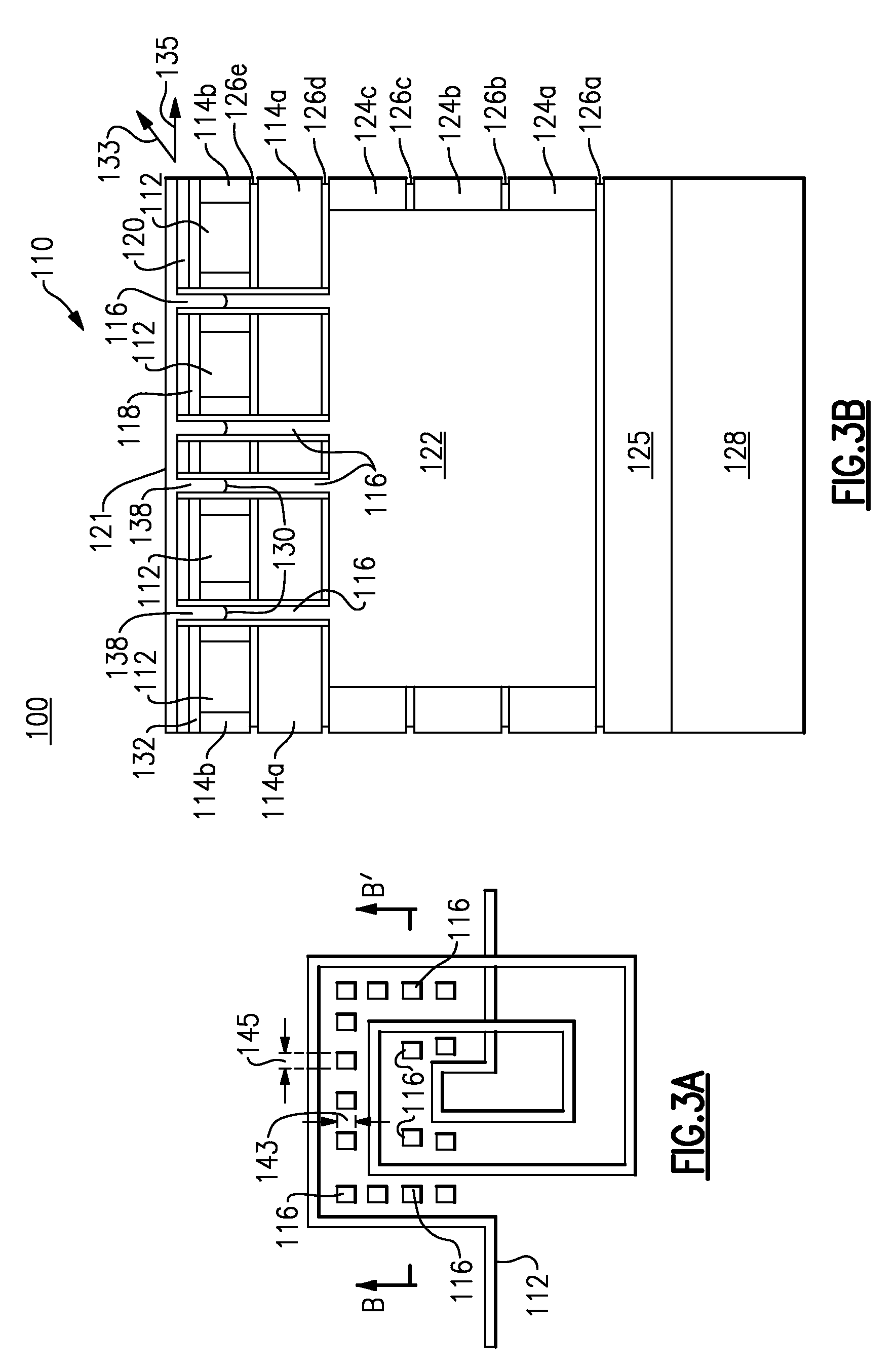Air gap under on-chip passive device
a passive device and air gap technology, applied in the field of microelectronics, can solve the problems of weakening or breaking of metal lines, affecting the air gap process, and affecting the arrangement shown in the article by chen
- Summary
- Abstract
- Description
- Claims
- Application Information
AI Technical Summary
Problems solved by technology
Method used
Image
Examples
Embodiment Construction
[0030]A microelectronic chip 100 in accordance with an embodiment of the invention is illustrated in FIGS. 3A and 3B. The chip includes a semiconductor region 128 in which active devices are provided, which may be conductively connected together in form of an integrated circuit. A passive device 110, e.g., an inductor, includes a plurality of metal patterns 112 which overlie the semiconductor region 128. As illustrated in FIG. 3B, the metal patterns 112 preferably include or consist essentially of a metal such as copper and are disposed in an “inorganic” interlevel dielectric (“ILD”) layer 114b, the ILD layer 114b illustratively including an inorganic dielectric material such as silicon dioxide, SiCOH, porous SiCOH, fluorinated silicon dioxide (“FSG”), porous silicon dioxide, and the like. Another inorganic ILD layer 114a is disposed underneath and adjacent to the ILD layer 114b. At least one, and preferably, a plurality of low-K ILD layers, e.g., ILD layers 124a, 124b, 124c, etc., ...
PUM
 Login to View More
Login to View More Abstract
Description
Claims
Application Information
 Login to View More
Login to View More - R&D
- Intellectual Property
- Life Sciences
- Materials
- Tech Scout
- Unparalleled Data Quality
- Higher Quality Content
- 60% Fewer Hallucinations
Browse by: Latest US Patents, China's latest patents, Technical Efficacy Thesaurus, Application Domain, Technology Topic, Popular Technical Reports.
© 2025 PatSnap. All rights reserved.Legal|Privacy policy|Modern Slavery Act Transparency Statement|Sitemap|About US| Contact US: help@patsnap.com



